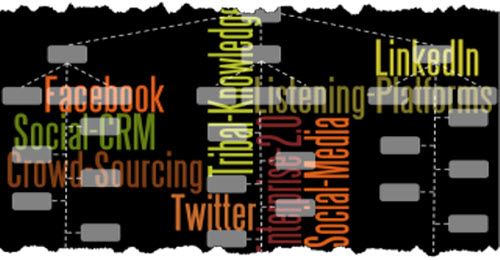
Right now customers who engage via social channels for service are in a lottery. The odds on a good experience are mediocre. A great one is even more remote. Yet when the right competency shows up something great can happen.
The evidence for this is found in increasingly frequent reports and benchmarks from social listening platform vendors. And from any number of immanent webinars using the topic of social customer support to draw in registrations.
I’ll add my own personal perspective of seeing master classes and workshops filling up much faster this year. With every sector and size of organisation now deciding it’s time to learn new lessons. Finally I’m aware that many interaction/experience vendors are busily coding new capability to take social customer service out of its early silo into a connected infrastructure.
Seems everyone has caught a whiff of fresh coffee.
For me, the interesting point about social customer service as opposed to traditional (private) versions is that the consequences of poor and great service experiences are leveraged beyond individual customers. The upswing and downswing really can matter. There is drama involved. In fact it will not be long before organisations cotton on to this and start to watch their ‘Goodwill Index’ with as much interest as their daily stock swing.
“We had a stinker today. Lost 1,300 points”
Well done on all that great intervention. Reckon we added an extra 700 points as a result”
You get the idea. Real time blips on a giant screen which reports how things are at scale today.
All of which raises an interesting question of effort and reward. Of course we want the upswing. Positive word of mouth is absolutely precious. Just ask anyone staring at their marketing automation checklist. But we remain lazy as organisations. The more common buzz concerns the downside. And before you tell me that this is inevitable, I can tell you it is not as cut and dried as you might think.
I just wrote up a piece of research for a client. It was a typical 2,000 sample sized UK online survey. I was surprised how many respondents said they gave both positive and negative feedback in pretty equal measure. Granted the odds were stacked ten percent in favour of criticism but the instinct to praise was broad based.
This means you can win big if you get your service standards up to point where customers notice and want to say thanks. It’s the same for service failures. Only you lose points instead. And you keep losing them if you don’t take the issue off the table. Thereafter you get noticed at scale. Rather like the newscaster with spinach-between-the-teeth for all to gawk at. Enough to make any self respecting brand guardian shudder.
I reckon we are moving to a point at which the truly lazy organisation will figure out that it takes less energy to be a high achiever in service delivery. In the context of witnessed behaviour which is essentially what social engagement is all about, the consequences of mediocrity loom large. Even wiggle room shrinks such that excuses become harder that remedy.
So social engagement forces a re-appraisal. It helps organisations regain their self respect in terms of how they behave towards customers. Of course some will be more stubborn than others. And will have to learn through pain rather than gain as behavioural science predicts.
Social Customer Service is a door to more. Question is which one will customers be opening and what’s behind it?




